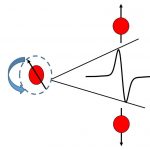RESEARCH
We are applying spectroscopic techniques to study dynamics and function of biomolecular systems, nanoparticle drug delivery systems and wet adhesion mechanisms.
Electron paramagnetic resonance (EPR) spectroscopy, also called electron spin resonance (ESR), is a technique for studying the structure, dynamics and molecular interactions of systems with unpaired electrons. EPR spectroscopy can be applied to any sample that contains a paramagnetic center such as organic radicals, transition metals, lanthanides and defect centers. The idea of EPR is very similar to the more familiar NMR technique. The magnetic moment that interacts with electromagnetic radiation arises from electron and nucleus in the EPR and NMR, respectively. Since most materials are diamagnetic, paramagnetic reporters called as spin labels or spin probes are introduced to study diamagnetic systems. Particularly, Tempo based nitroxide radicals are used as spin probes or spin labels to obtain the information concerning mobility, molecular structure, polarity and acidity.
